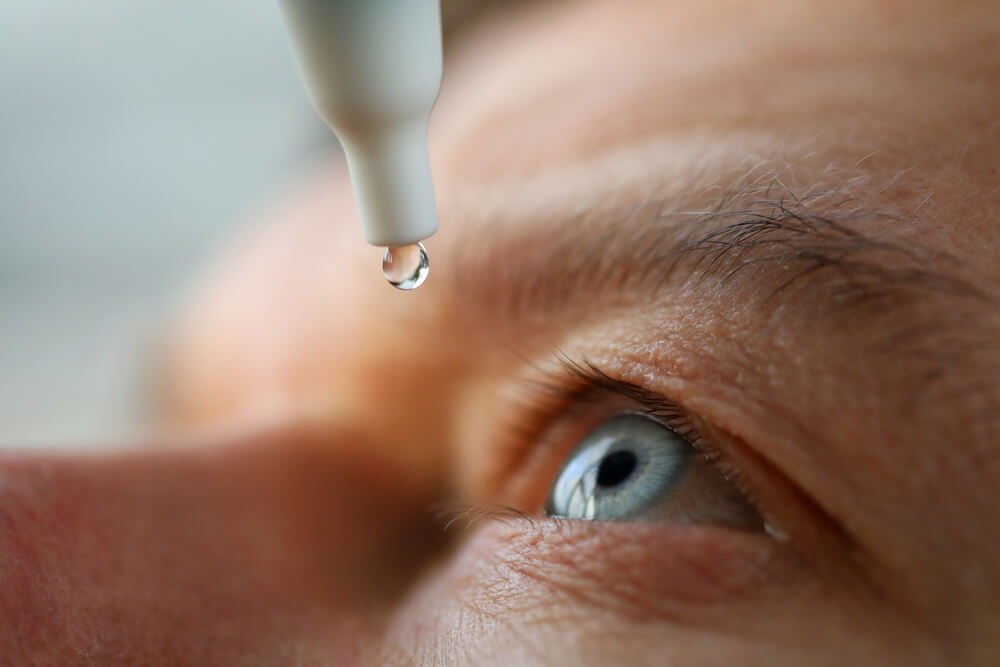
Glaucoma is a condition characterized by excessive pressure in the eye, or intraocular pressure. This irregularly high pressure is due to a buildup of fluid in the eye. As intraocular pressure increases, it can compress the eye’s optic nerve, eventually leading to vision loss.
Around 3 million people in the United States have glaucoma; although only half are aware of it. For people over 60 years old, glaucoma is a leading cause of blindness. The loss of vision is often so gradual that by the time you notice any difference in your vision, the glaucoma is already at an advanced stage.

Different types of glaucoma have different symptoms. The most common form of glaucoma is open-angle glaucoma. It usually has no symptoms in the early stages. Later on, though, as the optic nerve is increasingly damaged, the following symptoms appear:
Another type of glaucoma, called acute angle-closure glaucoma, happens very quickly. This is a medical emergency and can lead to blindness if untreated. If you experience any of the following symptoms, contact an ophthalmologist or visit the emergency room immediately:
Certain factors may increase your risk of developing glaucoma, including:
The most effective way to limit damage to your vision caused by glaucoma is with early diagnosis and treatment. This means having regular eye examinations that include measuring your intraocular pressure.
The American Academy of Ophthalmology recommends that people have a comprehensive eye exam at age 40. If you have no risk factors for glaucoma, you should have an exam every three to five years after that. If you are over age 60 or have other risk factors, you should have your eyes checked every one to two years. Ethnic groups with a greater risk of glaucoma may need to have an eye exam earlier.
If you experience gradual changes in vision, contact your eye doctor for an exam. If your vision changes suddenly, or if you have any other symptoms of acute angle-closure glaucoma, seek immediate care with an eye doctor or at the emergency room. Again, if left untreated, glaucoma can lead to blindness.
The surgical procedures performed by an ophthalmologist to treat glaucoma include:
This approach is performed to open drainage canals in the eye that are clogged.
With this surgical technique, a small piece of tissue is removed to allow fluid to drain properly from the eye.
With this treatment option, your ophthalmologist inserts a small tube into the eye that allows excess fluid to drain.
If you notice any changes in your vision, contact us for an appointment, so we can diagnose your vision problem and provide suitable treatment options. If your vision suddenly becomes blurry and is accompanied by severe eye pain, nausea, headache, reddening of the eye or halos, contact your eye doctor or go to the emergency room immediately, as this may be a sign of vision-threatening acute angle-closer glaucoma.

Treatment for glaucoma often begins with medicated eye drops. The goal of these medications is to lower the pressure in the eye (intraocular pressure) and prevent damage to the optic nerve.
To gain the most benefits of these medications, use them exactly as prescribed by your eye doctor. Sometimes your doctor may prescribe more than one type of eye drop. In this case, check with your doctor about how long to wait between using each kind.
Although eye drops for glaucoma can help save your vision, all of these medications have some side effects. In addition, some of the medication may be absorbed into the bloodstream, which can cause side effects that affect body parts other than your eyes.
The most common side effects of medicated eye drops include:
If you experience any of these side effects, tell your eye doctor. Do not stop taking your medicated eye drops unless you have spoken with your doctor. Using these eye drops as directed is the best way to help save your vision.
Your doctor may prescribe one or more type of eye drop. Some of the most common ones include:
If you have a family history of glaucoma or are noticing problems with your vision, contact your ophthalmologist immediately for an appointment. He or she can help diagnose your vision problem and suggest appropriate treatment options.

The iStent Trabecular Micro-Bypass is a surgical device that is available for use in treating patients with mild-to-moderate open-angle glaucoma.
Glaucoma is characterized by an excessive accumulation of fluid inside the eye, which leads to an increase in the inner eye pressure (intraocular pressure). This can damage the optic nerve and lead to a gradual loss of vision.
After iStent surgery, most patients’ vision improves that day. Many are also able to stop using medicated eye drops to reduce the pressure inside their eye. Others may be able to reduce the number of eye drops they need to use to control their inner eye pressure.
The iStent device is implanted during a surgical procedure, often implanted during cataract surgery. The most common side effects after surgery are:
The iStent device is not recommended for people with certain conditions such as angle-closure glaucoma, certain eye tumors and thyroid eye disease.
One cause of glaucoma is poor drainage of the fluid inside the eye, which, again, leads to increased intraocular pressure. The iStent device works by providing a permanent path for fluid to flow out of the eye. By restoring the flow of fluid, the pressure inside the eye is reduced.
While the device is used to treat glaucoma, it is implanted during cataract surgery. This is done as an outpatient surgery, which means you can go home after the procedure is finished.
The device is made of titanium and is very small (only 1 millimeter long). Once it is in place, you will not be able to see or feel it.
Please contact our office to schedule an appointment and find out whether you are an appropriate candidate for iStent treatment.
We are thrilled to welcome Dr. Allie Decker and Dr. Sydney Butalla to our team! Now offering expert eyecare for kids of all ages-from the ages of 6 months to teens. Book your appointment today! 207-775-1819 – 207-210-6700